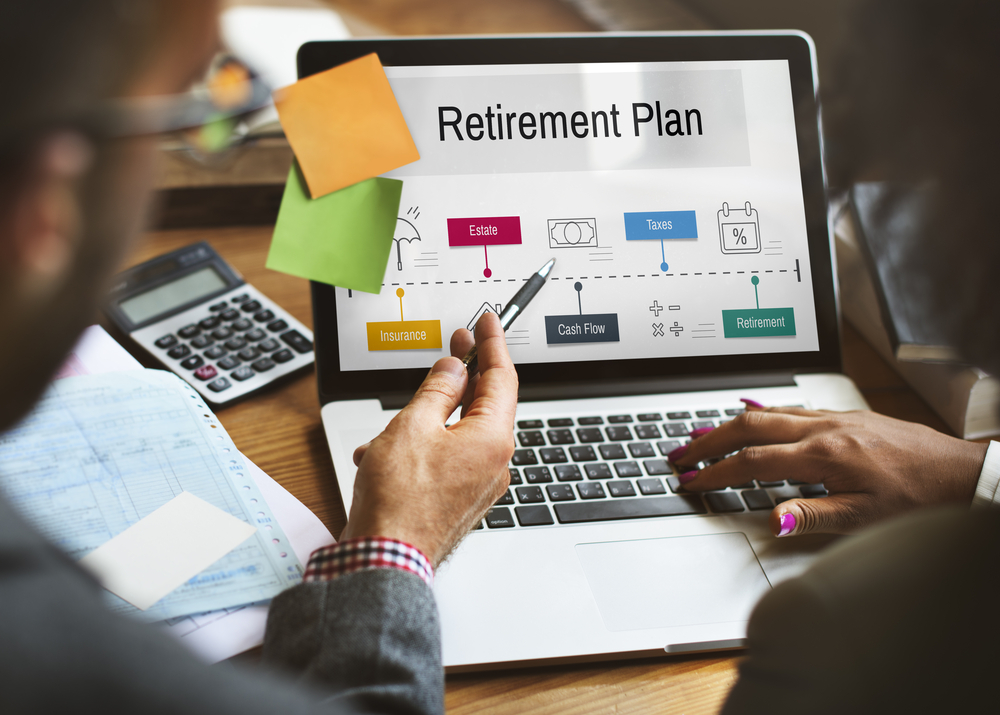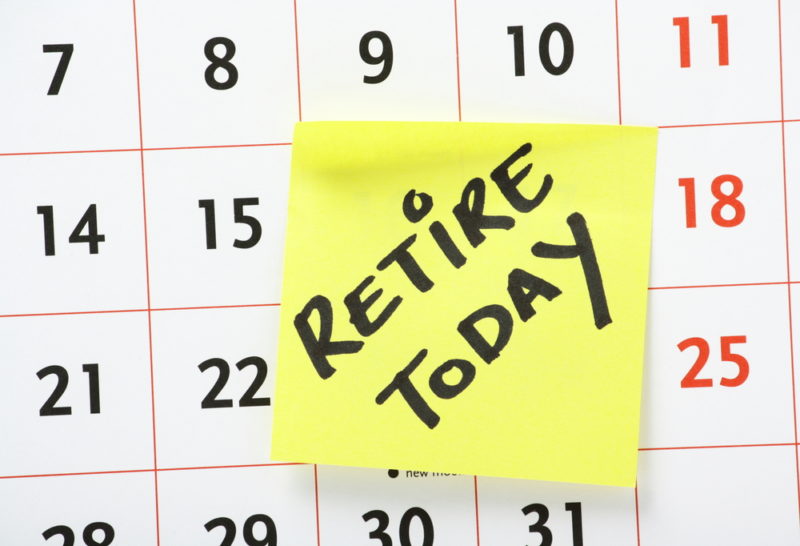The 5 Key Questions Your Retirement Plan Must Answer
by Gabriel Lewit

Designing a great retirement plan is no cakewalk! There are so many different variables for you to consider when planning. What should come first? What goals are you trying to achieve? How should you be invested? The list of questions is almost endless.
Nevertheless, having a retirement plan is the most important component in ensuring financial success during your golden years. As you assess your own financial and retirement plan, you’ll want to consider a few key questions that stand out as being particularly important.
In today’s article, we’ll take a closer look at 5 key questions that every great retirement plan must answer. If your retirement plan passes this test, congratulations, you’re in good company!
If your retirement plan fails to address these 5 questions, perhaps that’s a good warning sign that your plan could use some touching up.
Let’s go ahead and dive in and take a look at our very first question!
1. When is the Soonest I Can Afford to Retire?
As you are nearing your retirement date, you’re probably starting to think about all the fun things you will do with your newfound free time. Lazy mornings with the paper and a hot cup of coffee? Yes please! Leisurely walks around the park on a sunny day? Count me in!
For many of us, the sooner we can reach this retirement date, the better! But when is the absolute soonest you can retire and still have enough money to last your retirement years?

When you run the numbers for your retirement plan, you should have a year-by-year cash-flow assessment that shows you if you have enough assets to last through retirement. All you need to do next is model your plan with retiring a few years earlier and see if your plan can withstand the financial impact.
The challenge with retiring early is what we call a “triple-compounding” effect.
First, not only are you no longer bringing in a monthly paycheck, you’re now having to withdraw from your own investments to pay yourself. Secondly, when you pull this money out, it’s no longer earning interest and growing. This is called opportunity cost. Third, when you’re working, you’re typically adding more contributions to your retirement nest egg. Retiring earlier can substantially lower that nest-egg amount.
When you put all these together, you may find out that retiring early just isn’t possible. However, in many cases, until you run the numbers you just won’t know! We can help you design a great plan that will show you the absolute soonest you can afford to retire.
2. What is the Most Amount of Income I Can Safely Spend?
Retirement planning is predominantly about income distribution planning. You’ve got to take your retirement nest-egg and create a strategy that wisely spends down your investments in a secure and strategic manner.
When creating your paycheck, you may be tempted to take only what you need. For many, they worry that taking out more will put their retirement assets at risk of depletion. They are as thrifty in retirement as they were when saving for it.

On the other hand, retiring should be the time of your life when you finally get out there and enjoy yourself. Take an extra vacation or two. Buy the grandkids some additional presents. Treat yourself to that new pair of shoes!
Unfortunately, unless you plan the right way and grant yourself a “license to spend” in retirement, you may be unnecessarily scrimping through your retirement years. A great plan will show you how to maximize your retirement income – putting more in your pocket to spend – all while still providing you with confidence that you won’t run out of money.
3. What is the Biggest Loss My Portfolio Can Withstand?
Retiring can be a scary time for being invested in the market. Big drops all of a sudden feel a lot more impactful when you’re pulling money to live off of from your investment portfolio.
Unfortunately, it feels more impactful because it really is more impactful. When you’re working, you’re not drawing down your investments for income purposes. Thus, drops in the market, while uncomfortable, don’t pack as big of a punch.
When you’re retired, taking out that money for income at the same time as when your portfolio just dropped 25% – 30% can just feel downright dangerous. But, you need that money to live on. What’s the right decision to make?

This is where having a great financial plan will help provide you with additional peace-of-mind about your income withdrawals. The right plan will be stress-tested for market risk, including both small corrections and also for the impact of one or more bear markets, such as in 2001-2002 and also 2008.
If stress-testing your plan can show you successfully having enough assets, even when taking income withdrawals during some of the worst bear-markets in history, then you should feel very confident in your withdrawal amounts.
On the other hand, if your plan shows you running out of money too soon when stress-tested for market losses, there may be some additional planning work and strategizing that needs to occur.
This is where working with an experienced retirement planning specialist, like SGL Financial, can help you develop a game plan to overcome this challenge.
4. How Much Money Can I Leave to My Heirs?
Leaving money to beneficiaries, kids or other heirs is always an interesting discussion point with my clients. About 50% of them want to leave a healthy inheritance, while the other 50% state that they’d prefer to leave as little as possible!
Here’s something interesting that I’ve found. The 50% that want to leave as little as possible are really saying that they’d prefer to meet their own goals first. It’s not that they don’t want to leave something to their kids, they just don’t want to have to sacrifice their own retirement lifestyle to be able to leave a legacy instead.
Once we start planning together, assuming I can show them a way to spend as much as they want to spend (see point #2 above) without feeling like they are limiting themselves too much, they are suddenly “ok” with leaving a nice sized inheritance to their beneficiaries!

The important part here is knowing what these numbers look like, and then being able to make strategic planning considerations for your retirement. For example, if I ran your retirement plan and it showed you leaving $1 Million to your kids, but you’re barely spending anything on yourself during retirement, what would you do?
Perhaps you’d then increase your retirement spending. Maybe we can budget you an additional $20,000/year for traveling for the first 10 years of retirement. When we factor this into your retirement plan, let’s say it then shows you leaving $700,000 – $800,000 to your kids instead. You’ve got the traveling budget that you want, and still have a nice sized inheritance for the kids that’s more in line with what you’re thinking.
For many of my clients, this is what our conversations and plan adjustments look like. But it all starts with running your numbers and seeing your plan first!
5. Will I Be OK Financially?
The final item on our list is the simplest, yet most important question of them all… “Will I be OK financially?” That’s really what all this is about. But the answer to this question is different for every person, depending on the priorities that are most important to them.
In one of my recent blog posts, “What’s is Your Top Financial Priority in Retirement?” we discuss that concept even further.

The truth is, for most people, they simply want to have the income they need to live a modest lifestyle during their retirement. They want to know they won’t run out of money, and then want to leave something small to their kids. That’s really it for about 80% of the people that I design plans for.
So, what’s important to you? What would make sure that you feel financially OK? Once you have determined that, come on in for a visit with a planner like the ones here at SGL Financial, and we can help you build a plan to achieve it.
Does Your Plan Answer These 5 Key Questions?
There are lots of factors to consider when building your retirement plan. Hopefully this article has shed some additional considerations on what questions to answer when you build your plan.
Once we’ve designed a plan to help you achieve the goals and priorities that are most important to your lifestyle, then you can get to what’s truly important – enjoying your retirement days with carefree confidence and a smile on your face!
If there’s anything we can do to help make your dream retirement reality, please don’t hesitate to let us know.
Until next time,
